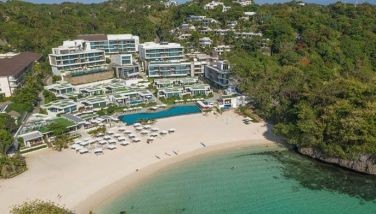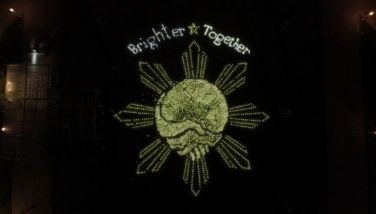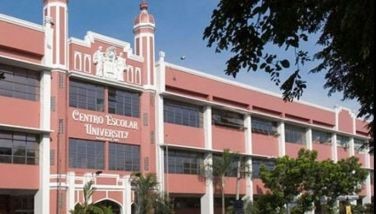Battle of Manila: Feb 3-March 3

The Battle of Manila lasted from Feb. 3 to March 3, 1945 and resulted in one of the worst destructions of a city during World War II. It was also the result of a strategic miscalculation by General Douglas MacArthur. The story has been told in several books; but, the book that has focused on this heartbreaking battle is the book Rampage by James M. Scott published by W.W. Norton & Company, New York, 2018. The introduction to the book said:
“ By early 1945, he [ MacArthur] prepared to liberate Manila, a city whose residents then faced widespread starvation. Convinced the Japanese, under the command of General Tomoyuki Yamashita would abandon Manila as he did, Mac Arthur planned a victory parade down Dewey [Roxas] Boulevard. But the enemy had other plans. Determined to fight to the death, Japanese marines barricaded intersections, converted buildings into fortresses and booby trapped stores, graveyards and even dead bodies.
The battle to liberate Manila resulted in the catastrophic destruction of the city and a rampage by the Japanese forces that brutalized the civilian population. Landmarks were demolished, houses were torched, suspected resistance fighters were tortured and killed, countless women were raped, and their husbands and children were murdered...In the end an estimated 100,000 civilians lost their lives.”
Before the Second World War, Manila had been called the Pearl of the Orient and was frequently featured in tourist brochures and steamship ads. Manila has never truly recovered from the battle. Though many of the landmark structures were rebuilt, the Walled City lay in ruins and was filled with squatters for decades. The Legislature was rebuilt and is now the National Museum of Fine Arts.
Various controversies continue to hound the story of the Battle of Manila. One story narrates that MacArthur had devised a strategy to encircle Manila and force the Japanese to surrender. The speculation is what would have happened if MacArthur had allowed a venue for the Japanese to escape into the hills of Marikina. If that had happened, would it have been possible for the battle to become the Battle of Marikina which was then sparsely settled; and would have resulted in very much less civilian casualties and destruction. Instead the last stand of the Japanese, surrounded by American forces was in Intramuros, the old Walled City which became almost totally destroyed.
There have also been criticism that American artillery played a large part in the city’s destruction. In his book James Scott quoted two critical observations.
Filipino historian author Anthony Aluit of By Sword and Fire, said: “Douglas Macarthur bears as much responsibility as Sanji Iwabuchi for the cruel fate that was inflicted on Manila.” American William Brady who survived the occupation and the battle wrote: “One side killed and destroyed us willfully. The other side killed and destroyed us willy-nilly.”
Another story that has raised some controversy is the trial and sentencing to death of General Yamashita, his chief of staff Akira Muto and General Hideki Tojo. The controversy is not in the many testimonies regarding atrocities committed by troops under the command. The question sometimes is why the Japanese generals were sentenced to death by hanging while German Nazi generals who were guilty of atrocities like the death camps were only sentenced to imprisonment.
There were other Japanese generals sentenced to death like Furuse and Yokoyama. Their lives were spared by then Philippine president Elpidio Quirino in spite of the fact that Quirino’s wife and three children were gunned down during the Battle of Manila. In a prophetic statement, Quirino said: “I am doing this because I do not want my children and my people to inherit from me hate for people who might yet be our friends.”
La Salle massacre
There were many stories of atrocities during the Battle of Manila. One of them is the massacre of around 68 men, women children including 16 La Salle Brothers. One of the most detailed account of this massacre is in the book by Anthony Aluit By Sword and Fire: The Destruction of Manila in World II , 3 February – 3 March 1945..
In his book Rampage, Scott devotes an entire chapter to the stories of those who took refuge in Sta. Rosa College, St. Scholastica’s College, and De La Salle College, which was a flourishing institution with 1,200 students and 27 La Salle Brothers when the war started. When the shelling started several families sought shelter in what was considered as one of the safest refuge. Among the Brothers who were massacred were: “Egbert Xavier, Flavius Leo, Alemond Lucian, Janos, Adolf Gebhard, Arkadius Maria, Friedbert Johannes, Gerfried Joseph, Lambert Romanus, Mutwald William, Paternus Paul, Ronuald Sixtus, Hartmann Hubert, Maximin Maria, Victorinus Heinrich.
Among the laymen who sought shelter were the families of Jose Carlos, Antonio Cojuangco, Servillano Aquino, Pierre Kahn, Clemente Uychuico, Enrique Vasquez-Prada.
On Feb. 12, 1945, a group of 21 Japanese soldiers made their way into the campus and proceeded to kill everyone in the campus. There were only 16 European brothers because the American brothers had been arrested several days before the massacre.
Today there is a memorial statue in the La Salle campus dedicated to the sixteen Brothers who died that tragic day.
Creative writing classes for kids and teens
Young Writers’ Hangout on Feb. 22 on the Hero’s Journey with Neni Sta. Romana Cruz (1:30 pm-3 pm; stand-alone sessions) at Fully Booked BGC. For details and registration, email writethingsph@gmail.com.
* * *
Email: elfrencruz@gmail.com
- Latest
- Trending



























